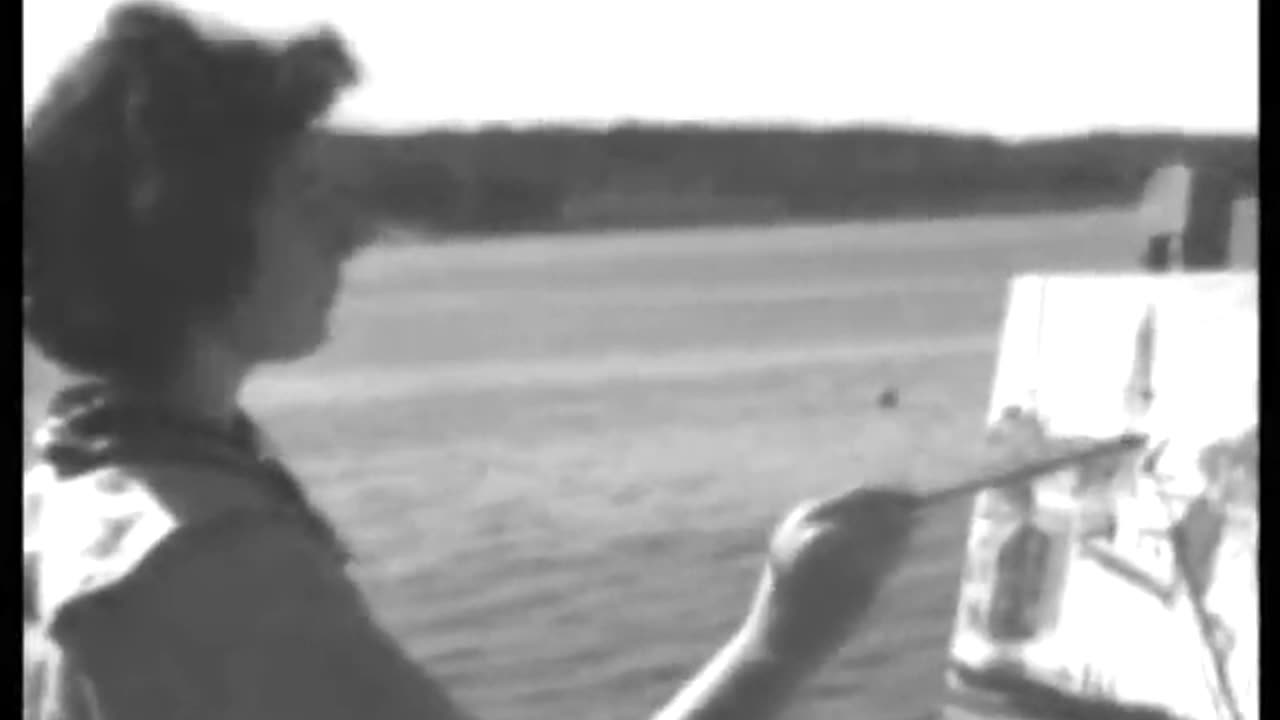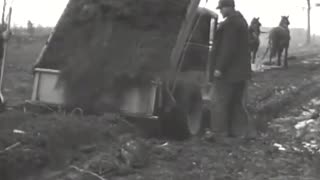Premium Only Content

A Better Massachusetts: WPA's Contributions, 1937
This silent film from 1937 illustrates the wide-ranging projects of the Works Progress Administration (WPA) in Massachusetts, aimed at enhancing infrastructure, cultural arts, public health, and education during the Great Depression.
Infrastructure improvements are showcased with street paving and sewer installation in Springfield, addressing urban development needs.
The arts are nurtured through WPA artists painting scenes of the Massachusetts shore, contributing to the cultural life of the community.
Recreation and youth development are highlighted with scenes of children enjoying playground activities.
Educational and vocational programs are depicted, including the construction of ship models in Marblehead, fostering skills in craftsmanship.
Public health initiatives are captured with research on preventing silicosis among granite workers in Quincy, demonstrating WPA's concern for occupational health.
Safety and emergency services are shown with the Coast Guard practicing breeches buoy rescues on Cape Cod, preparing for maritime emergencies.
Health education is evident as nurses provide instructions to mothers on baby care, aiming to improve child health outcomes.
Environmental and educational efforts include scenes from a fish hatchery in Gloucester, emphasizing conservation and education about local ecosystems.
Accessibility for the visually impaired is addressed through braille mapping at the Perkins Institute for the Blind in Watertown.
Cultural enrichment is further supported by children receiving free music and dancing lessons, promoting arts education.
The film concludes with activities in nursery schools, underlining WPA's commitment to early childhood education.
"A Better Massachusetts" reflects the WPA's comprehensive approach to community betterment, touching on various aspects of life to improve living standards across the state.
-
 8:49
8:49
Archival Moments
3 months agoRoad Building
79 -
 1:04:59
1:04:59
Man in America
7 hours ago“Summoning the Demon” — The AI Agenda Is FAR WORSE Than We Know w/ Kay Rubacek
17.8K10 -
 LIVE
LIVE
Tundra Tactical
5 hours ago $0.04 earned🎯💥 The World’s Okayest Gun Show 🔫😂 | LIVE Tonight on Rumble!
172 watching -
 3:36:03
3:36:03
Mally_Mouse
1 day ago🌶️ 🥵Spicy BITE Saturday!! 🥵🌶️- Let's Play: Tower Unite!
30.1K1 -
 58:59
58:59
MattMorseTV
5 hours ago $0.95 earned🔴Trump just BROKE Newsom.🔴
49.3K49 -
 18:14
18:14
Her Patriot Voice
5 hours agoWho Is WORSE for NYC: Trump Girl or Socialist?
24.2K23 -
 3:39:42
3:39:42
SavageJayGatsby
4 hours agoSpicy Saturday with Mally! | Road to 100 | $300 Weekly Goal for Spicy Bites!
31.3K1 -
 LIVE
LIVE
FomoTV
6 hours ago🚨 Swamp Theater: FBI Raids Bolton 🕵 Still NO Epstein Files, Trump's Troops & the Red Heifer Hoax 🐂 | Fomocast 08.23.25
59 watching -
 6:04:40
6:04:40
Akademiks
9 hours agoRoc Nation & Meg Thee Stallion did a 7 HOUR Deposition with me. Drake Secret Kid Finally Revealed.
49.9K2 -
 24:19
24:19
Stephen Gardner
6 hours ago🚨BREAKING: FBI Raid of John Bolton’s House Reveals THIS!
51.9K122